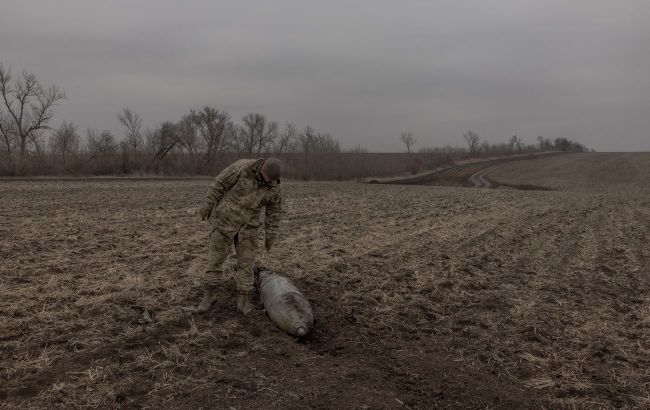Ukraine working on interceptors for countering Russian guided aerial bombs
 Illustrative photo: a guided aerial bomb shot down in the Dnipropetrovsk region (Getty Images)
Illustrative photo: a guided aerial bomb shot down in the Dnipropetrovsk region (Getty Images)
Ukraine will soon receive a new solution to counter Russian guided aerial bombs, a so-called guided aerial bomb hunter developed jointly with NATO, according to the Ukrainian Ministry of Defense.
A comprehensive technical solution—a radar, software using artificial intelligence, and an interceptor drone—was recently tested in France. The tests were conducted in adverse weather conditions.
"A simulated enemy target was identified, tracked, and captured by a radar equipped with an advanced sensor system. After that, thanks to AI-based software, the interceptor drone worked out the target's destruction along a pre-calculated trajectory," the Ministry said.
Ukraine, in particular, the NATO-Ukraine Joint Analysis, Training, and Education Center (JATEC), as well as NATO's Allied Command Transformation (ACT), are working on countermeasures against Russian guided aerial bombs.
Companies from NATO countries, experts from the Ministry of Defense, and the Armed Forces of Ukraine are also participating. In particular, France's Alta Ares is responsible for AI detection algorithms, Germany's Tytan Technologies for interception systems, and another French company, ATREYD, is working on container-based interceptor swarms.
The Ministry of Defense of Ukraine noted that the development of countermeasures against drones has been underway with NATO since March 2025. It has already come a long way — from concept to a series of working prototypes. If the bomb hunter is successfully implemented, its effective operation will protect many lives of civilians and Ukrainian military personnel.
"Ukrainian specialists are directly involved in the tests and provide expert assessments, which allows us to adapt the solutions to the realities of the modern battlefield as much as possible," the Ministry of Defense added.
Meanwhile, according to the Odesa Regional Military Administration and the Ukrainian Air Force, on October 24, Russians attacked the Odesa region with guided aerial bombs for the first time.
Later, the South Operational Command confirmed that the Russians had attempted to attack the Odessa region with three guided aerial bombs with an increased range of destruction, UMBP-5. 2 bombs were shot down, and another fell on its own.

